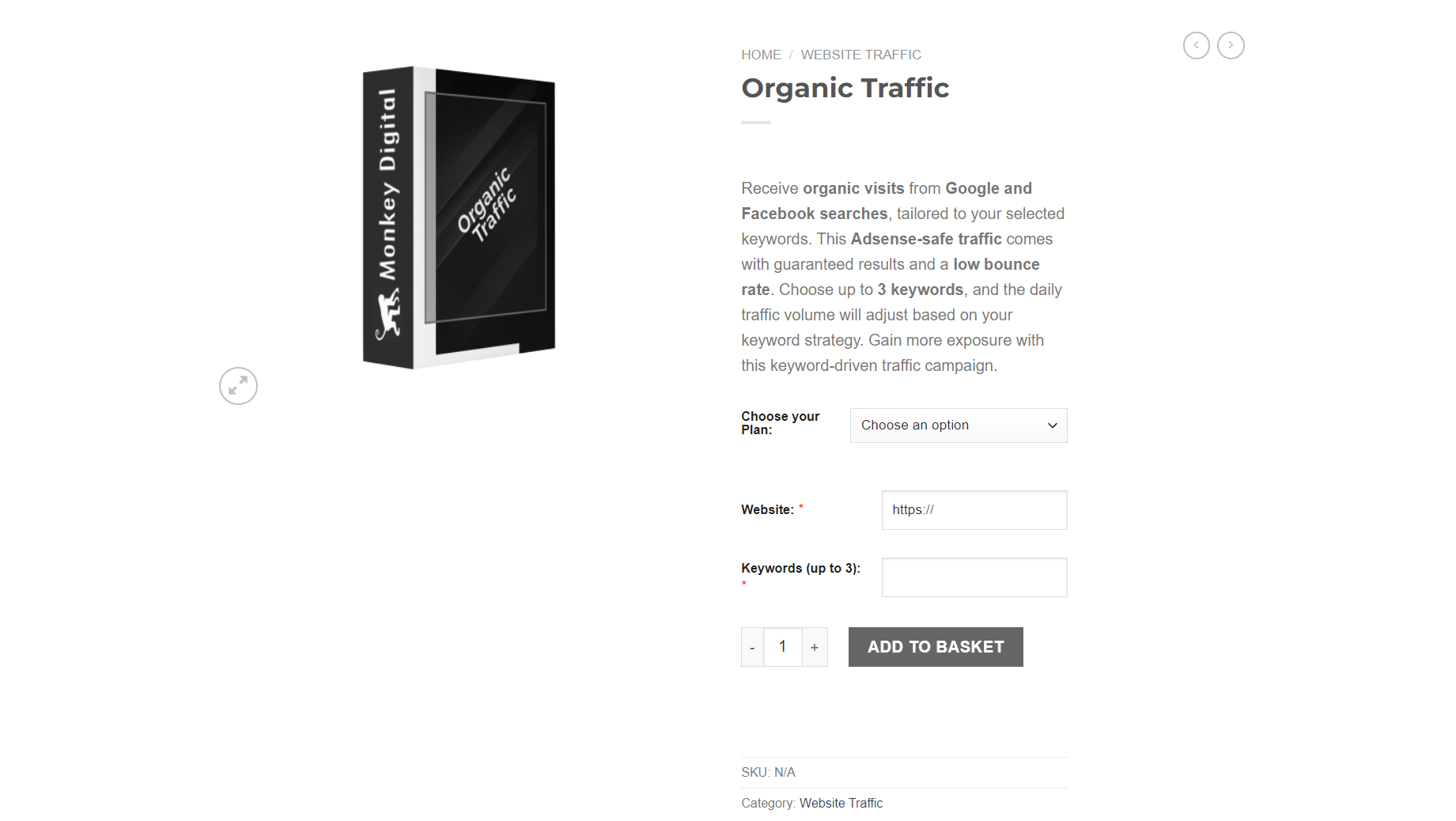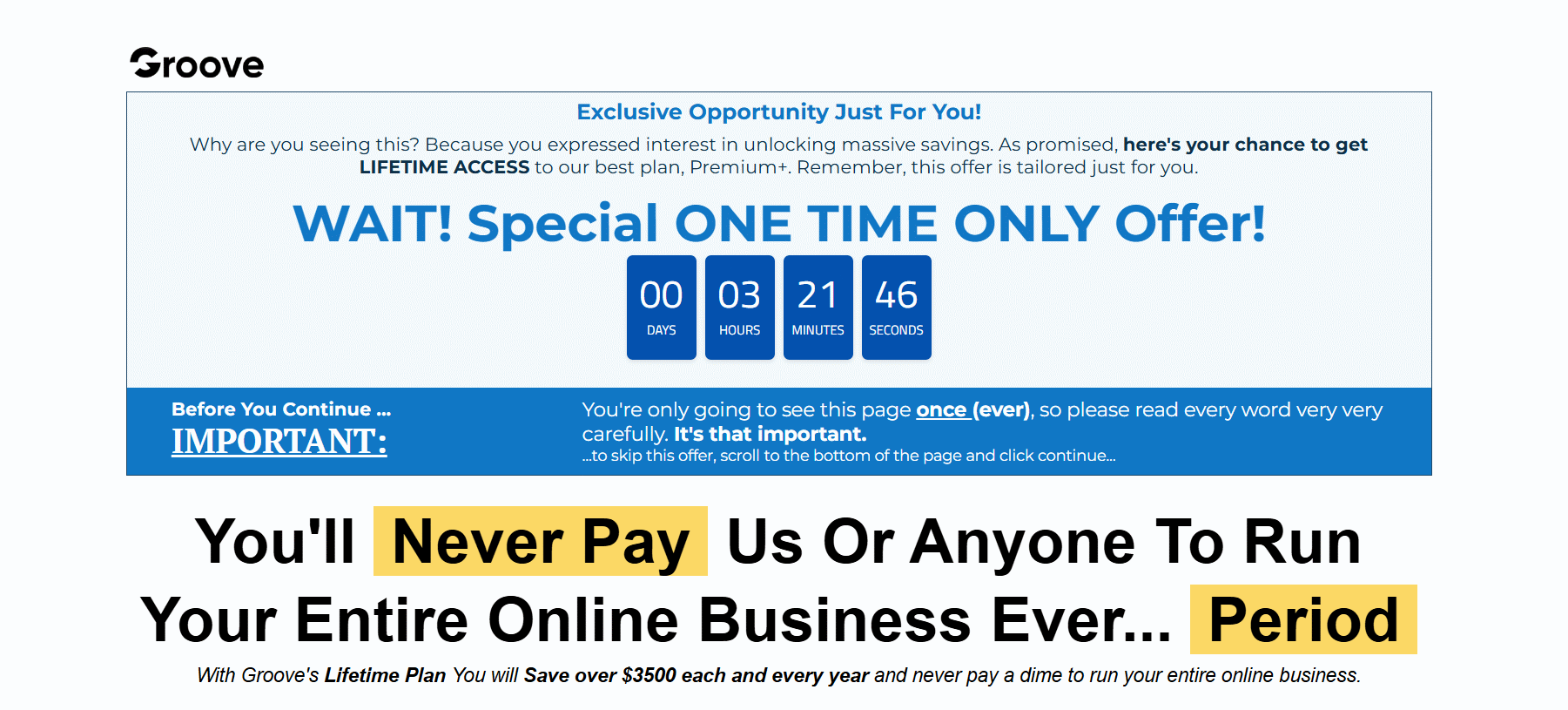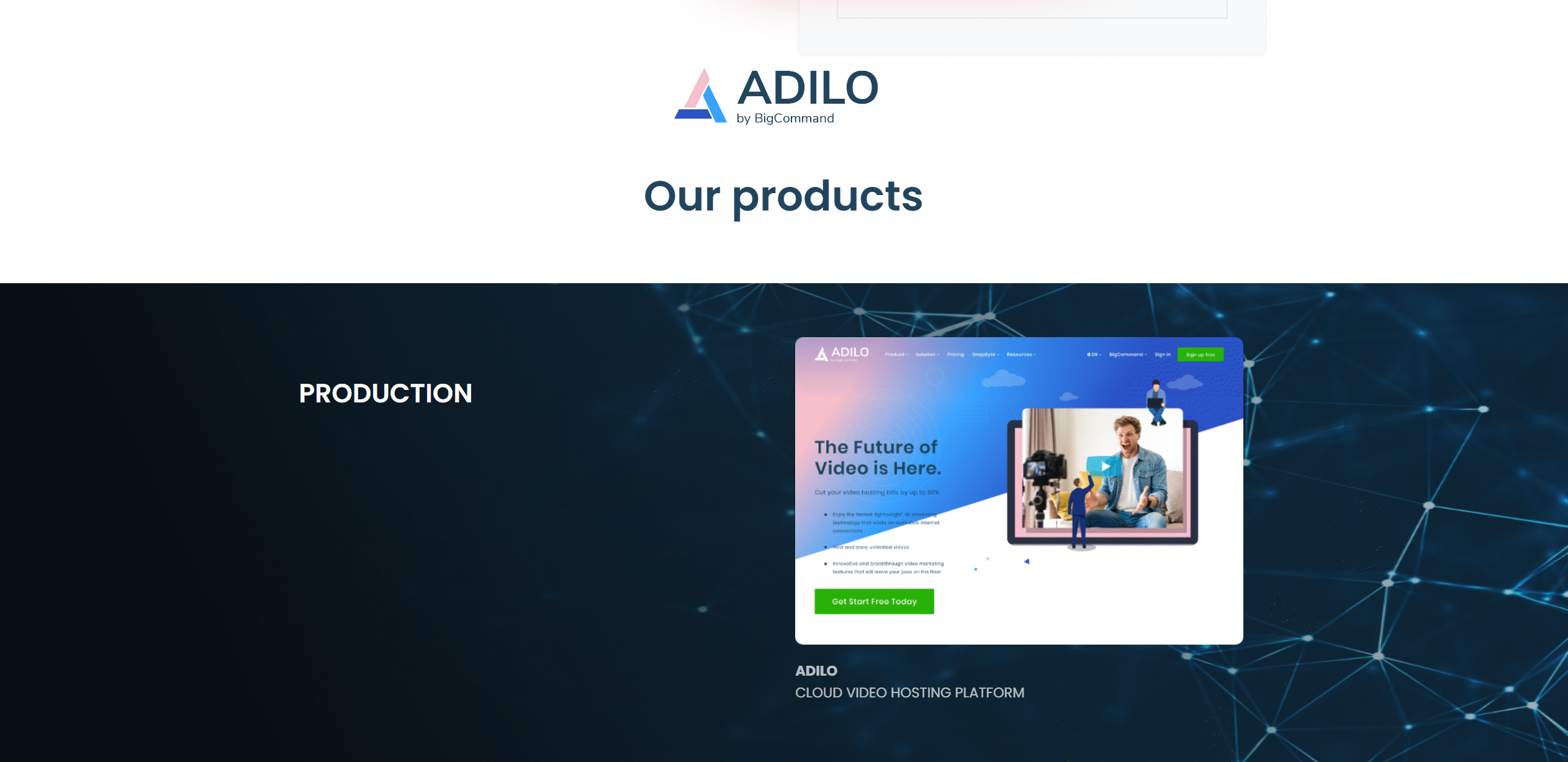Imagine launching a beautiful website, pouring your heart into its design and content, only to find it languishing in the darkness of the internet. Every pet project deserves an audience, and that’s where organic traffic comes in. By leveraging targeted keywords and real, engaged visitors, you can illuminate your website for all to see, transforming your efforts into genuine online success.
What is Organic Traffic and Why Does It Matter?
Organic traffic refers to visitors who come to your site via unpaid search results. This means they found your website through search engines like Google, rather than through paid ads. But why should anyone care about organic traffic? The answer is simple: it’s crucial for long-term digital growth.
Importance for SEO and Ranking
Organic traffic is a significant factor in search engine optimization (SEO). When a website has high organic traffic, it signals to search engines that the site is relevant and trustworthy. This can lead to better rankings in search results. A higher ranking means more visibility. More visibility often translates to more visitors. It’s a cycle that feeds itself.
Difference Between Organic and Paid Traffic
Let’s break this down. Organic traffic is earned through quality content and effective SEO strategies. In contrast, paid traffic comes from advertisements. Businesses pay to have their ads displayed on search engines or social media platforms. While paid traffic can yield quick results, it can be costly. Plus, once the budget runs out, the traffic does too. Organic traffic, on the other hand, can continue to flow without ongoing costs.
Impact of Organic Traffic on Business Performance
How does organic traffic affect business performance? Well, it’s like having a steady stream of customers walking into a store. They’re not just browsing; they’re interested in what you offer. This interest often leads to higher conversion rates. Moreover, organic traffic tends to have a lower bounce rate. Visitors who arrive through organic search are generally more engaged. They’re looking for specific information, and your site has it.
Definition of organic traffic: Visitors who find your site through unpaid search results.
Importance for SEO: High organic traffic boosts your search engine rankings.
Difference between organic and paid traffic: Organic is earned; paid is bought.
Impact on business performance: More engaged visitors lead to higher conversion rates.
"Organic traffic is the lifeblood of any successful website." - Industry Expert
In summary, organic traffic is derived from search engines without any paid promotions. This makes it invaluable for businesses seeking sustainable growth. Establishing authority in your niche requires a focus on attracting organic visitors. It's not just about numbers; it's about building a community of engaged users who value what you provide.
Crafting Your Keyword Strategy: The Heart of Organic Traffic
In the world of digital marketing, keywords play a crucial role. They are the terms that users type into search engines. But how do you choose the right ones? Here’s a guide to help you craft an effective keyword strategy.
1. Identifying Target Keywords
The first step is to identify target keywords that are relevant to your niche. Think about what your audience is searching for. What problems do they want to solve? What information do they seek? By understanding these aspects, you can pinpoint keywords that resonate with your audience.
Consider using long-tail keywords. These are longer phrases that are more specific. They often have less competition and can capture targeted searches.
For example, instead of just "shoes," you might target "best running shoes for flat feet." This specificity can lead to higher conversion rates.
2. Using Tools for Keyword Research
Utilizing tools like Google Keyword Planner can be a game-changer. This tool allows you to discover new keywords and see how often they are searched. It also provides insights into the competition level.
But remember, it’s not just about the numbers. The volume of searches is important, but so is the relevance. Choose keywords that align with your content and audience needs.
3. Understanding User Intent
Understanding user intent behind keywords is essential. Why are users searching for a specific term? Are they looking to buy something, or are they seeking information? This understanding will guide your content creation.
For instance, if someone searches for "how to fix a leaky faucet," they are likely looking for a DIY guide. On the other hand, if they search for "plumber near me," they might want to hire someone. Crafting content that meets these intents will keep users engaged and coming back.
4. Crafting Compelling Content
Once you have your keywords, the next step is to craft compelling content around them. This is where the magic happens. Use your keywords naturally within your content. Avoid keyword stuffing, as it can lead to a poor user experience.
Instead, focus on creating valuable content. This could be blog posts, videos, or infographics. Whatever format you choose, ensure it aligns with your keywords and user intent.
"Effective keyword research is not just about numbers - it's about understanding your audience's needs." - Marketing Specialist
In conclusion, choosing the right keywords directly affects the volume and quality of traffic you receive. By focusing on relevant keywords, using the right tools, understanding user intent, and crafting engaging content, you can significantly enhance your organic traffic.
As a final tip, consider choosing up to three keywords and adjust your daily traffic volume based on your selected strategy. This approach will help maximize engagement and visibility.
Real Visitors vs. Bots: Why Authentic Engagement Matters
In the digital world, the battle between real visitors and bots is ongoing. Understanding the implications of this struggle is crucial for anyone managing a website. Let's delve into the consequences of bot traffic and the benefits of attracting genuine visitors.
Consequences of Bot Traffic
First, it's essential to recognize that bot traffic can severely harm your website. Bots can skew your analytics, making it hard to gauge true performance. They inflate your traffic numbers without contributing to genuine engagement. This can lead to:
Lower SEO Rankings: Search engines like Google prioritize sites with authentic traffic. If bots dominate your numbers, your site may struggle to rank well.
Diluted Engagement: When bots visit your site, they don’t interact with your content. This lack of interaction can mislead you about your audience's preferences.
So, what does this mean for your site? Essentially, it can hurt your credibility and visibility in the crowded online space.
Benefits of Attracting Genuine Visitors
Now, let’s flip the coin. Attracting real visitors offers numerous advantages. These individuals are more likely to:
Convert: Real visitors are often looking for something specific. They engage with content and are more inclined to make purchases.
Interact: Genuine visitors leave comments, share content, and contribute to discussions. This creates a vibrant online community.
In fact, engagement rates for authentic traffic can be up to 50% higher than those driven by bots. Isn’t that compelling?
Building a Community Around Authentic Engagement
When real visitors engage, they foster a community. This community can support your brand, provide feedback, and even become advocates. Think of it like a garden: nurture it with genuine interactions, and it will flourish.
But how do you measure this engagement? One effective method is through bounce rates.
Measuring Real Engagement Through Bounce Rates
Bounce rates indicate how many visitors leave your site after viewing only one page. A high bounce rate often suggests that visitors aren't finding what they need. By focusing on attracting real visitors, you can significantly lower your bounce rates.
As noted, focusing on real visitors can improve bounce rates dramatically. This means more people are sticking around to explore your content. Engaging content leads to better retention rates.
"Engagement comes from real human interaction, not from bots."
- Digital Marketing Guru
In conclusion, focusing on real visitors is not just a trend; it's a necessity. Our service ensures 100% organic traffic delivered by real users. This enhances your site's credibility and fosters authentic engagement.
How to Measure the Impact of Increased Organic Traffic
Measuring the impact of increased organic traffic is crucial for any online business. It’s not just about getting visitors; it’s about understanding their behavior and maximizing conversions. Here’s how to effectively track and analyze your organic traffic.
1. Key Metrics to Track
When evaluating organic traffic, focus on three key metrics:
Traffic Sources: Where are your visitors coming from? Knowing this helps you understand which channels are most effective.
Bounce Rate: This measures the percentage of visitors who leave without interacting. A high bounce rate may indicate that your content isn’t engaging enough.
Conversions: Ultimately, the goal is to convert visitors into customers. Track how many visitors complete desired actions, like signing up for a newsletter or making a purchase.
2. Using Google Analytics to Analyze Performance
Google Analytics is a powerful tool for analyzing website performance. It provides detailed insights into user behavior. For instance, you can see how long users stay on your site and which pages they visit. This data is invaluable.
Are you familiar with setting up goals in Google Analytics? This feature allows you to track conversions effectively. It’s like having a roadmap for your traffic growth. You can see what’s working and what needs improvement.
3. Adjusting Strategies Based on Performance Data
Once you have your data, it’s time to make adjustments. If a particular page has a high bounce rate, consider revising its content. Perhaps it’s not answering the visitors’ questions. Or maybe the call-to-action isn’t clear.
Remember,
"Data-driven decisions are the key to enhancing your online presence." - Data Analysis Expert
This approach enables businesses to refine their strategies continuously.
4. Setting Realistic Goals for Your Traffic Growth
Setting goals is essential. But they must be realistic. For instance, if a targeted campaign shows a 75% increase in organic traffic, aim to maintain that growth over time. If your conversion rates typically increase by 30% with optimized content, use this as a benchmark.
What are your traffic goals? Consider breaking them down into smaller, manageable objectives. This makes tracking progress easier and keeps your team motivated.
Monitoring traffic allows for tailored marketing adjustments. Use the data to continuously improve your organic traffic efforts. By tracking metrics closely, businesses can evaluate the success of their keyword-driven traffic campaigns.
Next Steps: Creating a Long-Term Organic Traffic Plan
Building a strong online presence takes time and effort. One key to success is creating a long-term organic traffic plan. This plan should adapt to changes in audience behavior and search engine algorithms. Here are some essential steps to consider.
1. Integrating Consistent Content Creation and Updates
Content is king. Regularly updating your website with fresh, relevant content keeps your audience engaged. It also signals to search engines that your site is active. Think of it like watering a plant. Without consistent care, it won’t grow. By regularly posting blog articles, videos, or infographics, you can attract and retain visitors.
2. Building Backlinks for Increased Authority
Backlinks are like votes of confidence from other websites. They show search engines that your content is valuable. To build these links, reach out to other bloggers or websites in your niche. Guest posting is one effective strategy. It’s like making friends in the digital world. The more connections you have, the more authority you gain.
3. Engaging with Your Audience Through Social Media
Social media platforms are powerful tools for engagement. They allow you to connect with your audience directly. Share your content, respond to comments, and participate in discussions. This interaction builds loyalty. It’s like hosting a party; the more you engage with your guests, the more they enjoy themselves. Remember, people appreciate a personal touch.
4. Regularly Reviewing and Adjusting Your Keyword Strategy
Keywords are the backbone of SEO. Regularly reviewing your keyword strategy is crucial. Are your chosen keywords still relevant? Are they driving traffic? Use tools like Google Analytics to monitor performance. Adjust as needed. Think of it like tuning a musical instrument; small changes can make a big difference in the overall sound.
"Sustainability in digital marketing comes from a robust organic strategy." - Online Marketing Expert
A long-term approach ensures steady traffic growth and audience loyalty. It’s essential to consider the ever-evolving landscape of SEO. Algorithms change, and so do user preferences. Therefore, flexibility is vital. A comprehensive plan that adapts to these changes will lead to ongoing success.
In conclusion, implementing a long-term organic traffic plan is not just about quick wins. It’s about building a sustainable future for your online presence. By focusing on consistent content, backlink building, audience engagement, and keyword strategy, one can create a solid foundation. This foundation will support growth and adaptability in an ever-changing digital world. Embrace these steps, and watch your organic traffic flourish.



